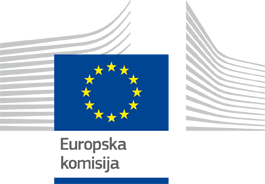

FLAG Factsheet
The FLAG territory covers both the Ria de Muros e Noia and the Ria de Corcubión. The region has historically been highly dependent on fishing even though the sector has not reached the same importance as it has in the south of Galicia. Still, the five ports and their auction (Noia, Muros, Fisterra, Porto do Son and Portosín) do generate crucial employment in their immediate surroundings where fishing is part of the traditional way of life.
Other economic activities are concentrated in the main urban areas of the FLAG, situated in the north (Cee - Corcubión ) and east (Noia) which are well connected by major roads to the cities of La Coruña and Santiago de Compostela. This leaves the central part (Carnota, Dumbría) of the FLAG territory as the most peripheral and isolated.
The territory is also dealing with a much older population profile that the rest of Galicia. On top of that, depopulation is also an issue, with population levels having dropped by 9.5% between 1999 and 2013. A lack of opportunities apart from low skilled employment, making the territory less attractive for younger generations is one of the reasons for this.
Today, the FLAG area is challenged to support the high amount of micro-businesses which face difficulties in adapting to external changes within the fisheries supply chain. The fragmentation of the sector also leads to problems in the management of common resources such as fish stocks.
Tourism has emerged as one of the few alternatives to the decline of traditional industries. The beaches and the landscape, promoted in the media by events such as the Vuelta cycle race of Spain, are key to attracting more tourists. In addition, the demand for second homes in the region is increasing.
However, the region is not yet taking full advantage of the emerging flow of tourism. There is a challenge to unite all initiatives through an overall strategy on promoting the region as a tourist destination.
The total surface of protected areas is 30,499 ha or about 5 % of the area, distributed between six Special Areas of Conservation (Carnota-Monte Pindo, Complexo Húmido de Corrubedo, Costa da Morte, Esteiro do Tambre, Monte e Lagoa de Louro y Os Miñarzos.
The Costa Sostible FLAG will focus on three main objectives:
Regional
Processing and transforming fishery products based on discards
Every year there will be a call for project proposals with a deadline on the 1st of March. If the budget of this call is not exhausted, a second call will be organised, with a deadline on the 1st of September (except in 2020, when there will be no second call, in order to ensure the programme is closed on time).
Calls are published here: http://www.accioncosteira.es/?q=gl/taxonomy/term/21
The FLAG has experience in adding value to projects products (e.g. organisation of ‘days of excellence’ to raise awareness on working with cockles).
The FLAG is mainly interested in exchange and cooperation on diversifying activities in the fisheries sector.
The FLAG territory overlaps with the two Leader LAGs Costa da Morte and Deloa.
The FLAG acts as an independent body but the FLAG and LEADER LAG share certain board members. Common partners include the nine municipalities (public sector), two associations representing the economic and two representing the social sector (13 in total).
LAG and FLAG staff have frequent informal exchanges to keep each other informed on the programme. The information given to potential project promotors covers both programmes to link with the instrument that best fits with the specific proposal.
There is no common strategy but the draft versions of the LAGs’ strategies were also adapted to be in line with the already approved strategy of the FLAG.
The FLAG has 41 members[1]:
All nine local public authorities of the territory;
9 fishermen´s associations (cofradías);
1 association of net makers;
1 association of mussels;
4 business associations;
4 touristic associations;
7 cultural associations;
5 social entities;
3 sports and nautical clubs
[1] This information is independent from the consultation of environmental actors during the elaboration of the local development strategy.